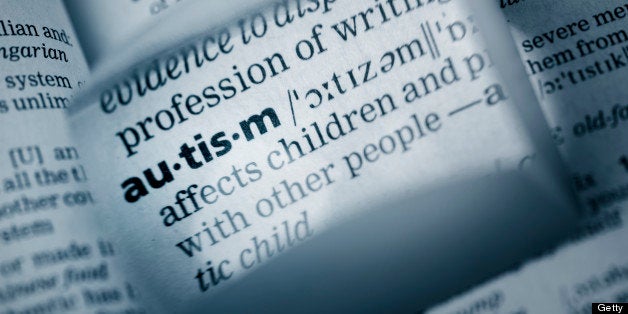
By: Wynne Parry, LiveScience Contributor
Published: 06/11/2013 11:34 AM EDT on LiveScience
Editor's Note: With the release of the latest edition of the mental health manual, the Diagnostic and Statistical Manual of Mental Disorders (the DSM), LiveScience takes a close look at some of the disorders it defines. This series asks the fundamental question: What is normal, and what is not?
Quirky, nerdy fictional characters have brought Asperger's syndrome into the realm of popular culture in recent years. But, as of late May, the disorder that has defined these characters, and been applied to a growing number of real people, will no longer exist thanks to revisions to psychiatric disorders in the new version of the DSM, the DSM-5.
Asperger's disorder was marked by difficulties interacting with others, along with abnormal behaviors and abnormally intense interests in topics such as baseball statistics or trains. These characteristics can give people with the disorder a savant-like quality portrayed in pop culture. For instance, on the TV show "Community," the character Abed Nadir possesses an encyclopedic knowledge of movies and television.
Fictional characters like Nadir tend to be portrayed as appealing and able to function in their work -- not too far off from normal. And while difficulty with social interactions and idiosyncratic interests are experiences many have, for people with Asperger's these traits cross into mental disorder territory.
Until May 22, with the official release of the DSM-5, Asperger's was considered related to but distinct from autism. DSM-5 contains a new disorder that replaces both the old autistic disorder and Asperger's: It is called autism spectrum disorder. [5 Things that Might Really Cause Autism]
The new autism spectrum disorder criteria include impaired social communication or social reciprocity, which could mean difficulty making eye contact, a lack of facial expression or no interest in one's peers.
Peculiar behaviors or interests -- technically described as "restricted, repetitive" in the DSM-5 -- make up the second criterion. These could include hand flapping, insistence on a strict routine or a fixation on a specific subject, such as trains.
This change made to diagnoses of autism and Asperger's has been among the highest profile and most controversial in the new DSM-5. A study, published in April 2012 using a preliminary version of the new DSM-5 autism spectrum criteria found about 75 percent of patients who had been diagnosed with Asperger's under the old criteria would no longer qualify for a diagnosis, raising the possibility that they could lose access to services, such as special education in schools.
The experts who revised the DSM-5 have disagreed with the study's findings, saying the revision will not substantially alter the prevalence of autism, which has been increasing.
Unlike most people diagnosed with autism under the old DSM criteria, those diagnosed with Asperger's could generally function independently, because they could communicate adequately. Even so, aspects of their social skills might be impaired.
For instance, while many people are not gifted conversationalists, someone with Asperger's may continue talking about a favorite subject for some time, remaining oblivious to his listener's loss of interest by missing cues of disinterest that someone without the disorder would catch, said Robin Rosenberg, a clinical psychologist and co-author of the psychology textbook "Abnormal Psychology"(Worth Publishers, 2009).
Meanwhile, the old autism diagnosis could entail more severe problems, such as a lack of speech or abnormal use of language.
The new autism spectrum disorder also encompasses a condition in the old DSM called pervasive developmental disorder not otherwise specified (PDD-NOS). This catchall category applied to people whose impairments didn't quite meet with the criteria for autism or Asperger's.
Follow us @livescience, Facebook & Google+. Original article on LiveScience.com.